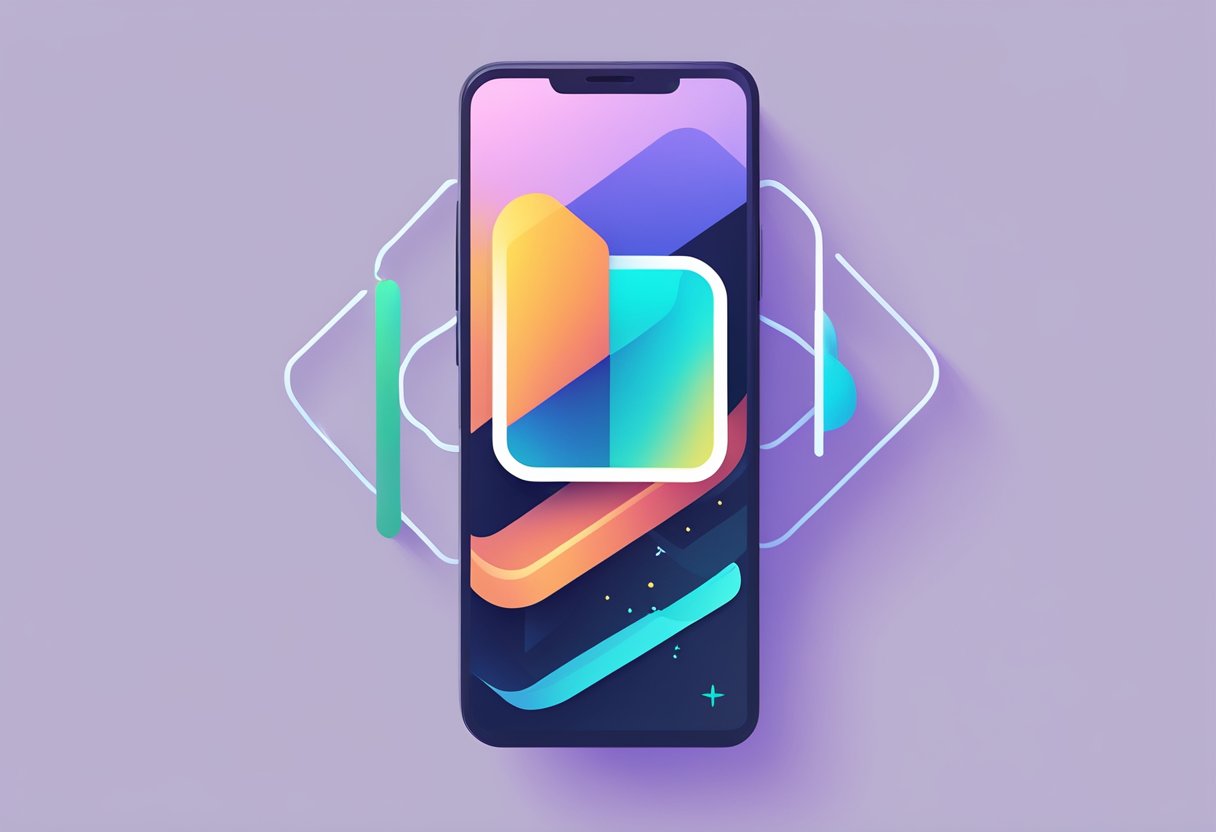React Native Bluetooth is a technology that enables developers to create mobile applications that can communicate with Bluetooth devices. It is a powerful tool that allows developers to create apps that can interact with a wide range of hardware, from fitness trackers to smart home devices. With React Native Bluetooth, developers can create apps that are more versatile and offer a greater range of functionality.

One of the key benefits of React Native Bluetooth is that it is cross-platform. This means that developers can create apps that work on both iOS and Android devices, without having to write separate code for each platform. This not only saves time and effort, but it also ensures that the app is consistent across different platforms.
Another advantage of React Native Bluetooth is that it is easy to use. Developers can quickly and easily create apps that can connect to Bluetooth devices, send and receive data, and perform other tasks. This makes it an ideal tool for developers who want to create apps that can interact with hardware, but who may not have extensive experience in working with Bluetooth technology.
Índice De Conteúdo
React Native Bluetooth Basics
Understanding Bluetooth Technology
Bluetooth technology is a wireless communication protocol that enables devices to communicate with each other over short distances. It was first introduced in 1994 and has since become a standard feature in most electronic devices. Bluetooth technology uses low-power radio waves to transmit data between devices. The latest version of Bluetooth is Bluetooth 5.0, which offers faster data transfer speeds and longer range.
In the context of React Native, Bluetooth technology can be used to connect mobile devices to other Bluetooth-enabled devices, such as sensors, beacons, and other mobile devices. This opens up a wide range of possibilities for developing mobile applications that can interact with the physical world.
Setting Up React Native for Bluetooth
To use Bluetooth functionality in a React Native application, you need to install a Bluetooth library. One of the most popular Bluetooth libraries for React Native is react-native-ble-manager. This library provides a simple interface for discovering, connecting, and communicating with Bluetooth devices.
To install react-native-ble-manager, you can use the npm package manager. Simply run the following command in your project directory:
npm install --save react-native-ble-manager
Once the library is installed, you can import it into your React Native application and start using its functions to interact with Bluetooth devices.
To enable Bluetooth functionality in your application, you also need to request the necessary permissions from the user. This can be done using the PermissionsAndroid module in React Native.
import { PermissionsAndroid } from 'react-native';
async function requestBluetoothPermission() {
try {
const granted = await PermissionsAndroid.request(
PermissionsAndroid.PERMISSIONS.ACCESS_COARSE_LOCATION,
{
title: 'Bluetooth Permission',
message: 'This app needs access to your Bluetooth devices.',
buttonNeutral: 'Ask Me Later',
buttonNegative: 'Cancel',
buttonPositive: 'OK',
},
);
if (granted === PermissionsAndroid.RESULTS.GRANTED) {
console.log('Bluetooth permission granted.');
} else {
console.log('Bluetooth permission denied.');
}
} catch (err) {
console.warn(err);
}
}
By requesting the necessary permissions and installing the react-native-ble-manager library, you can start building React Native applications that can interact with Bluetooth devices.
Building a Bluetooth App
Building a Bluetooth app using React Native requires a few steps. This section will guide you through the process of initializing Bluetooth, scanning for devices, and connecting to devices.
Initializing Bluetooth in React Native
To initialize Bluetooth in React Native, you need to install the react-native-ble-plx library. This library provides a set of APIs for working with Bluetooth Low Energy devices. Once you have installed the library, you can initialize Bluetooth by creating an instance of the BleManager class.
import BleManager from 'react-native-ble-plx';
const bleManager = new BleManager();
Scanning for Devices
To scan for devices, you can use the startDeviceScan method of the BleManager class. This method takes two arguments: an array of service UUIDs to filter devices by, and a callback function that gets called each time a device is discovered.
bleManager.startDeviceScan(['<service UUID>'], (error, device) => {
if (error) {
console.error(error);
return;
}
console.log(device.name, device.id);
});
Connecting to Devices
To connect to a device, you can use the connectToDevice method of the BleManager class. This method takes two arguments: the device object returned from the startDeviceScan callback, and a callback function that gets called once the connection is established.
bleManager.connectToDevice(device, (error, device) => {
if (error) {
console.error(error);
return;
}
console.log('Connected to', device.name);
});
Once you are connected to a device, you can use the discoverAllServicesAndCharacteristics method of the BleManager class to discover all the services and characteristics of the device.
device.discoverAllServicesAndCharacteristics((error, device) => {
if (error) {
console.error(error);
return;
}
console.log(device.services());
});
In conclusion, building a Bluetooth app using React Native requires initializing Bluetooth, scanning for devices, and connecting to devices. The react-native-ble-plx library provides a set of APIs for working with Bluetooth Low Energy devices. With these APIs, you can easily build powerful Bluetooth apps.
Data Communication
React Native Bluetooth provides a seamless way to send and receive data between devices. The communication process involves three main steps: sending data, receiving data, and handling data streams.
Sending Data
To send data over Bluetooth, the sender device needs to establish a connection with the receiver device. Once the connection is established, the sender can use the write method to send data to the receiver. The write method takes a string or an array of bytes as an argument and sends it to the receiver.
Receiving Data
Receiving data over Bluetooth is similar to sending data. The receiver device needs to establish a connection with the sender device. Once the connection is established, the receiver can use the read method to receive data from the sender. The read method returns a promise that resolves with the received data.
Handling Data Streams
React Native Bluetooth also provides a way to handle data streams. A data stream is a continuous flow of data between two devices. To handle data streams, the sender device can use the writeWithoutResponse method and the receiver device can use the onCharacteristicRead method.
The writeWithoutResponse method sends data to the receiver without waiting for a response. This method is useful for sending data streams because it allows the sender to send data continuously without waiting for a response from the receiver.
The onCharacteristicRead method is called when the receiver receives data from the sender. This method can be used to handle data streams by continuously reading data from the sender.
In summary, React Native Bluetooth provides a straightforward way to send and receive data between devices. The write and read methods can be used to send and receive data, while the writeWithoutResponse and onCharacteristicRead methods can be used to handle data streams.
Bluetooth Permissions and Security

Managing Permissions
When using Bluetooth in React Native, it is important to properly manage permissions to ensure that the user’s privacy is respected. Before using Bluetooth, the app must request the necessary permissions from the user. This can be done using the PermissionsAndroid API provided by React Native.
The PermissionsAndroid API allows the app to request permissions for various features, including Bluetooth. When the app requests Bluetooth permissions, the user will be prompted with a dialog box asking for their consent. If the user grants permission, the app can then use Bluetooth.
It is important to note that some devices may have different Bluetooth capabilities, and therefore may require different permissions. For example, some devices may support Bluetooth Low Energy (BLE), which requires a different set of permissions than regular Bluetooth. App developers should be aware of these differences and request the appropriate permissions accordingly.
Ensuring Data Security
When using Bluetooth, it is important to ensure that the data being transmitted is secure and cannot be intercepted by unauthorized parties. This can be accomplished by using encryption and authentication.
Encryption is the process of converting data into a secret code to prevent unauthorized access. Bluetooth supports several encryption methods, including Secure Simple Pairing (SSP) and Secure Connections. App developers should use these encryption methods to protect sensitive data.
Authentication is the process of verifying the identity of the device or user. Bluetooth supports several authentication methods, including Numeric Comparison, Just Works, and Passkey Entry. App developers should use these authentication methods to ensure that only authorized devices can access the data.
In addition to encryption and authentication, app developers should also be aware of other security risks associated with Bluetooth, such as Bluejacking and Bluesnarfing. Bluejacking is the unauthorized sending of messages to nearby Bluetooth devices, while Bluesnarfing is the unauthorized access of data on a Bluetooth device. App developers should take steps to prevent these types of attacks, such as disabling Bluetooth when not in use and using strong passwords.
In summary, managing permissions and ensuring data security are important considerations when using Bluetooth in React Native. App developers should use the PermissionsAndroid API to request the appropriate permissions and use encryption and authentication to protect sensitive data. They should also be aware of other security risks associated with Bluetooth and take steps to prevent unauthorized access.
Troubleshooting and Best Practices
Common Issues
React Native Bluetooth can sometimes encounter issues that may hinder its performance. One of the most common issues is the inability to connect to a Bluetooth device. This can be due to a number of reasons, such as incorrect pairing codes or outdated firmware. To fix this issue, it is recommended to double-check the pairing code and ensure that the firmware is up-to-date.
Another common issue is the disconnection of Bluetooth devices during data transfer. This can be caused by low battery levels or interference from other wireless devices. It is recommended to ensure that the Bluetooth devices are fully charged and to minimize the use of other wireless devices while transferring data.
Performance Optimization
To optimize the performance of React Native Bluetooth, it is recommended to follow these best practices:
- Use low-power Bluetooth devices to conserve battery life.
- Limit the number of devices connected to the Bluetooth network to prevent congestion and improve data transfer speeds.
- Use the latest version of React Native Bluetooth to take advantage of bug fixes and performance improvements.
- Avoid using Bluetooth in areas with high levels of interference, such as near microwaves or other wireless devices.
By following these best practices, users can ensure that React Native Bluetooth performs optimally and avoids common issues.

